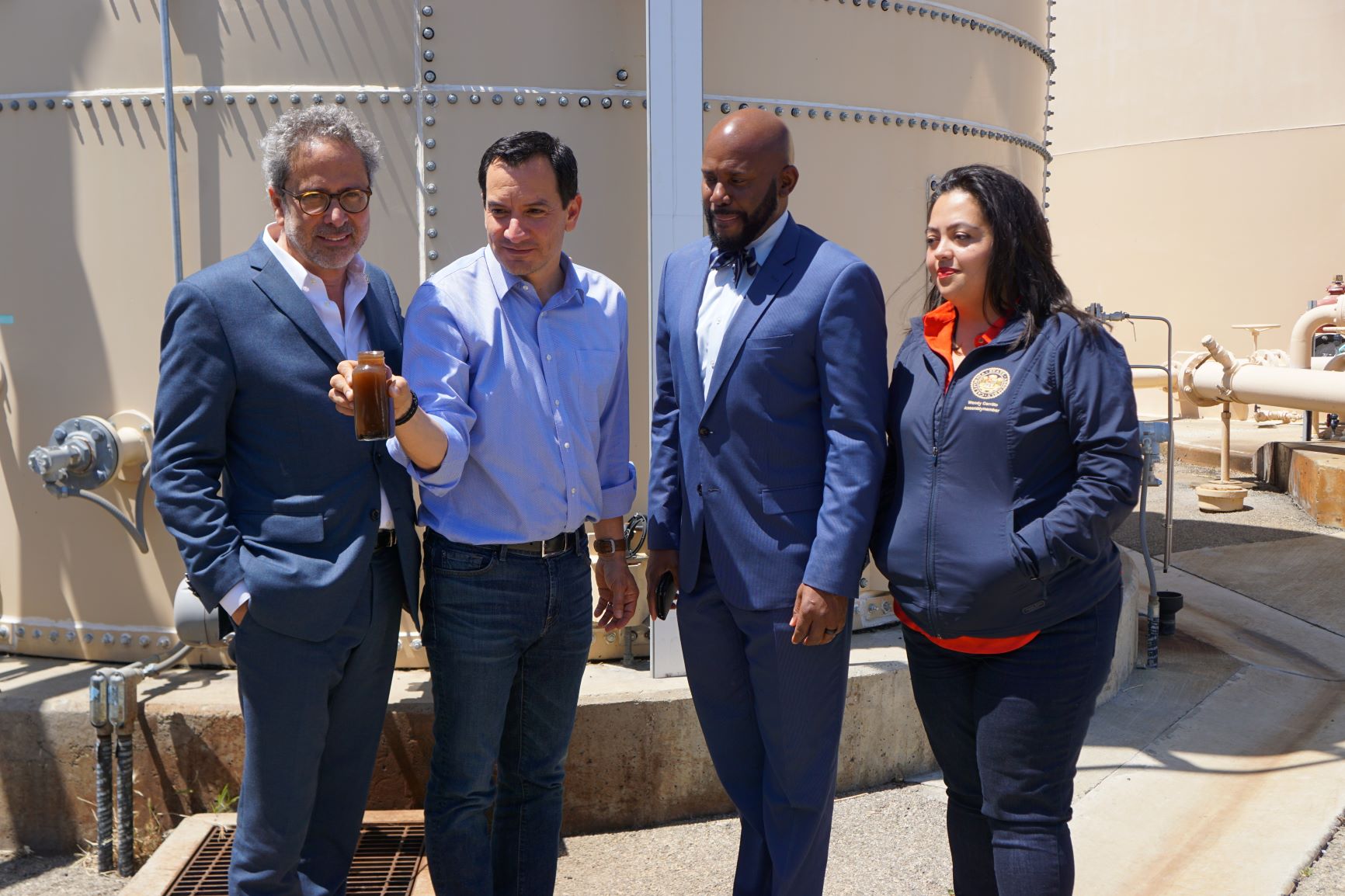“There’s mustard gas in the corner.”
That was two weeks ago in a water treatment facility in Compton that’s responsible for delivering clean, safe water to more than 6,800 households. While mustard gas, or chlorine gas, is cheap way to treat water, it’s an outdated way to run a water system. It’s also indicative of a bigger public health crisis. There are over one million people in California without safe and affordable drinking water.
Yet, this year, because of families and residents fighting to expose California’s toxic taps crisis, the state is closer than ever to passing permanent and sustained fix.
While most agree that unsafe drinking water is a moral abomination demanding urgent attention, solutions have been difficult to implement – in large part because our water systems are fragmented and often ignored.
Over the past few months, I’ve traveled up and down the state organizing legislative tours on drinking water. Those tours, led by local residents, healthcare professionals, legislative leaders like Speaker Rendon and Chair Garcia, and community advocates, shed light on four surprising truths.
There’s Toxic Drinking Water in Every Part of the State
There’s no part of California exempt from the toxic taps crisis. About 300 public water systems out of compliance with basic drinking water standards, in every county in the state. As many as one in every four schools in the Central Valley has had unsafe drinking water. In Coachella, residents of mobile homes in “Polanco” parks can’t afford to connect their pipes to those providing safe water nearby. From Lynwood, Maywood, and Compton to Ceres and Thermal, residents have paid for murky tap water and replacement bottled water for decades. Whether urban or rural, communities of color and low-income neighborhoods bear the brunt of health impacts due to unsafe water.
People with Contaminated Drinking Water Pay More
Clean drinking water is freedom from fear, freedom from disease, freedom to prosper. Without it, it’s impossible to live a good life. The tragic irony is that for people with clean water, their water bill is typically manageable and often less than their other utility bills. Conversely, people with unsafe water are forced to pay much more. First, they are charged a monthly water bill for tap water that is unsafe to drink—but they still must use it to clean and bathe. Then, they must pay for some other source of water, like bottled water, or risk health impacts. These costs mean that families and children may not drink enough water or turn to soda and other sugary beverages.
On our Los Angeles tour, we saw waterías – bottled water stores targeting Latino communities – exploit this situation by telling residents that their tap water is unsafe, and then selling them water bottled from the exact same unsafe sources at a huge markup. Local families are paying around $200-300 a month for this hoax.
Dilapidated Water Infrastructure = Public Health Crisis
At the Sativa water system in Compton, canisters of chlorine gas line the walls. On the Central Valley tour, we saw water systems that couldn’t afford to consolidate with others nearby to provide safe and affordable water. In a state that’s home to some of the greatest technological inventions of the 21st century, water public works serving disadvantaged communities are stuck in the past. As long as these water systems can’t afford to train their staff, build new infrastructure, and maintain their equipment, drinking water will continue to fail public health standards, putting Californians at risk for cancer, birth defects, heart disease, diabetes, and infant mortality.

California legislators visit Sativa Los Angeles County Water District, Asma Mahdi/Better World Group
Running Water Systems Takes a Team
Too often, we assume small water systems can effectively run themselves. In systems plagued by unsafe drinking water, historic corruption, and poor finances, this couldn’t be further from the truth. Whether the tours took us to Sativa or Coachella, we heard repeatedly that struggling water systems need dedicated, deeply-engaged teams with skills in engineering, accounting, and communications to reliably turn the corner. At the same time, these systems need to devote extra time and attention to restoring community trust. Operating in the dark is not acceptable, particularly in communities that have been disregarded for generations. Changing this will not happen overnight, and it’s one of the reasons why sustained, ongoing funding is critical to ending the toxic taps crisis.
While in Los Angeles, County Supervisor Mark Ridley-Thomas said, “This is an issue of justice…I’m motivated by ensuring that every community member is treated with the dignity and worth that they should be accorded.”
Community advocates have been relentless in the fight for a real, lasting solution. The more those in power grapple with the hard truths of unsafe drinking water, the better chance we have of ending this crisis once and for all.
